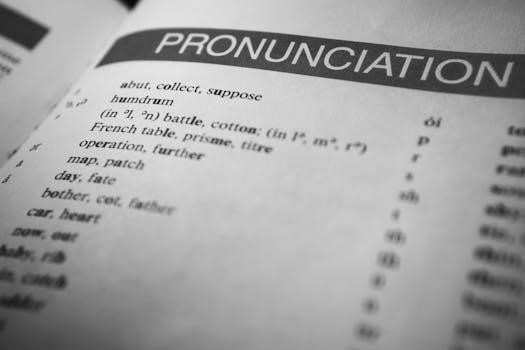GM part number cross-referencing is essential for locating compatible components, especially when original parts are unavailable. This guide helps navigate the complexities of GM part identification and substitution.
Importance of Accurate Part Identification
Accurate part identification is paramount in automotive maintenance and repair, especially when dealing with General Motors vehicles. Using the correct GM part number ensures proper fit, function, and performance, preventing potential damage or safety issues. A mismatched component could lead to operational failures, decreased vehicle lifespan, and costly repairs. The complexities within GM’s vast catalog of parts necessitate a precise method for identification, and cross-referencing becomes indispensable when sourcing alternative or aftermarket options. The process ensures compatibility, especially when original parts are discontinued or hard to find. It is crucial to use tools that provide the most accurate information for your specific vehicle model. Improper part selection can compromise the integrity of the vehicle’s systems and potentially void warranties. Therefore, meticulous attention to detail and using reliable cross-referencing resources is essential to every repair or maintenance task.

Understanding GM Part Number Structure
GM part numbers contain coded information about the manufacturer, vehicle type, model year, and plant of origin. Decoding this structure is essential for accurate cross-referencing.
Decoding the Manufacturer and Vehicle Type
The initial three characters within a General Motors (GM) part number are crucial for identifying both the manufacturer and the specific vehicle type. These characters act as a unique identifier, pinpointing which division of GM produced the part, such as Chevrolet, Buick, GMC, or Cadillac. Moreover, these initial characters will also often indicate the general vehicle platform or type for which the part was originally intended. Understanding this initial segment allows users to quickly narrow down their search, ensuring they are looking for a part compatible with the correct family of vehicles. For example, specific codes denote parts for trucks versus passenger cars, or for high-performance models as opposed to standard ones. This foundational knowledge is critical when cross-referencing parts, as it establishes the basic parameters for compatibility and proper functionality within the intended vehicle system, preventing misapplications.
Interpreting Model Year and Plant Codes
Following the manufacturer and vehicle type identifiers, GM part numbers typically include codes that specify the model year and the manufacturing plant where the component was produced. These codes are critical for ensuring precise compatibility, as even within the same vehicle type, slight variations can exist across different model years. The model year code helps distinguish between parts that may appear similar but have internal or external differences. Moreover, the plant code indicates the specific facility where the part was manufactured. This is important because different plants might have subtle variations in their manufacturing processes, which can result in parts that are not fully interchangeable. Therefore, a thorough analysis of both the model year and the plant codes is essential for accurate cross-referencing. Ignoring this detail can lead to the installation of incompatible parts, which could affect the vehicle’s performance and safety.

Online GM Parts Lookup Systems
Several online resources offer GM parts lookup systems. These tools help users find the correct part numbers and verify compatibility, using databases and search algorithms.
Melling Parts Lookup System
The Melling Parts Lookup System stands out as a valuable online tool for identifying specific GM components. This system, accessible through their website, allows users to search for parts by various criteria. You can input the original GM part number, or explore based on vehicle model and year. This feature simplifies the process of finding compatible Melling parts that meet or exceed the specifications of original equipment. The website’s interface is designed for easy navigation. This makes it user-friendly for both professional mechanics and DIY enthusiasts alike. Furthermore, Melling’s database is continually updated. This ensures that users have access to the latest information. By using this system, you can enhance the efficiency and precision of your part identification, leading to successful repairs and maintenance. It is a quick and reliable resource.
GM RPO Lookup and Decoder
GM’s Regular Production Option (RPO) codes offer another pathway for accurate part identification. These codes, found on a sticker inside a GM vehicle, detail specific features and components installed at the factory. A GM RPO lookup and decoder tool allows users to translate these codes into detailed information about the vehicle. This includes details about the engine, transmission, and other options. While the RPO system doesn’t directly provide part numbers, it helps narrow down the search parameters. It ensures that you are looking for the correct parts that match the exact build of your vehicle. The downside is that you will need to input codes individually to get the specific information you need. Despite that limitation, using the RPO decoder remains a valuable step in cross-referencing GM parts. This ensures compatibility and proper fit.

Alternative Part Number Resources
Besides official systems, VIN lookup tools and aftermarket guides provide valuable options for cross-referencing. These resources can help identify compatible parts, especially when original numbers are unavailable.
Using VIN Lookup Tools
VIN (Vehicle Identification Number) lookup tools offer a powerful alternative method for identifying the correct GM parts for your specific vehicle. Unlike general part number searches, VIN lookups provide precise matches based on your vehicle’s unique specifications. These tools decode the VIN, revealing critical details such as the model year, trim level, engine type, and factory options. This information helps ensure the part you are ordering is the exact one your vehicle requires. Some online VIN lookup services are specifically designed for auto parts, providing enhanced search capabilities. These tools often integrate with parts databases, allowing direct access to compatible part numbers. By using a VIN lookup, you can avoid the risk of ordering incorrect parts, which can be time-consuming and costly. Remember, using VIN tools is crucial for accurate parts identification and vehicle-specific applications. This method is particularly useful when dealing with complex systems or variations within a model line.
Exploring Aftermarket Cross-Reference Guides
Aftermarket cross-reference guides are valuable resources for finding compatible parts when the original GM part number is not readily available, or you are looking for alternatives. These guides, often provided by aftermarket parts manufacturers and suppliers, compile extensive databases linking OEM (Original Equipment Manufacturer) part numbers to their equivalent aftermarket counterparts. They are particularly helpful when dealing with older vehicles where original parts might be discontinued. These guides often offer a range of options at varying price points and quality levels, allowing you to choose the most appropriate part for your needs. When using these guides it’s important to pay close attention to the specific make, model, and year range covered by the reference material. Also, be sure to verify that the specifications and features of the aftermarket part match those of the OEM part to ensure proper functionality and compatibility. Always double-check the information from multiple sources to ensure the accuracy of the cross-reference. Aftermarket guides can be a lifeline for finding obscure or hard to source components.

Specific Part Number Examples
Let’s examine examples of GM part numbers, such as a transmission filter and a fluid specific part number, to illustrate cross-referencing processes and practical application.
Transmission Filter Cross-Reference Example
Consider a situation where a specific GM transmission filter, identified by an original part number, is no longer readily available. For instance, a filter with a number like 7T4Z-7A098-B might be needed for a particular transmission model. This is where cross-referencing becomes crucial. Instead of relying solely on the original GM part number, one can search for aftermarket alternatives or compatible filters from other manufacturers; Online parts lookup systems, like the one found at autonomia.pro, allow you to input the original part number and discover equivalent replacements. These systems often provide a list of compatible filters, sometimes from different brands, ensuring you can still find a suitable replacement for your vehicle’s transmission. Using such resources can save time and money by offering viable alternatives to scarce original parts. This also highlights the need to consult multiple databases, including aftermarket guides, to ensure the correct part is identified.
Fluid Specific GM Part Number Example
Let’s examine a specific fluid example, like the Mobil1 Synthetic LV ATF HP, identified by the GM part number 19417577. This highlights how crucial it is to correctly identify the fluid’s specifications using the specific GM part number. When dealing with fluids, the part number is critical because it dictates the precise formulation, viscosity, and additives required for the specific GM vehicle. A cross-reference in this context wouldn’t just be about finding a fluid that works; it would be about finding a fluid that matches the exact specifications of the original GM fluid. This could be vital for the longevity and performance of the vehicle’s systems, such as the transmission. Therefore, using aftermarket guides and specialized resources is vital to find fluids that accurately match the specified GM part number. Sometimes, substitute fluids have different numbers but the same characteristics.
and Further Resources
Accurate GM part number cross-referencing is critical for vehicle maintenance. Additional support can be found online via dedicated forums and parts websites, ensuring correct part identification.
Where to Find Additional Information and Support
For further assistance with GM part number cross-referencing, numerous resources are available. Online platforms such as the Melling parts lookup system offer comprehensive databases, enabling users to search for parts efficiently. Additionally, the GM RPO lookup and decoder can be a valuable tool for decoding vehicle-specific option codes, though it’s important to note that this system requires entering codes individually. Moreover, specialized forums and communities dedicated to GM vehicles often provide expert advice and shared knowledge regarding part substitutions. Exploring aftermarket cross-reference guides can also prove beneficial, particularly when sourcing parts from alternative manufacturers. Remember, accuracy is paramount, so always verify any cross-referenced part’s compatibility before purchasing. Finally, reputable online retailers often have knowledgeable staff who can help clarify any uncertainties and assist in locating the correct parts. Utilizing these resources should enable a smoother and more reliable experience when identifying and sourcing GM components.



